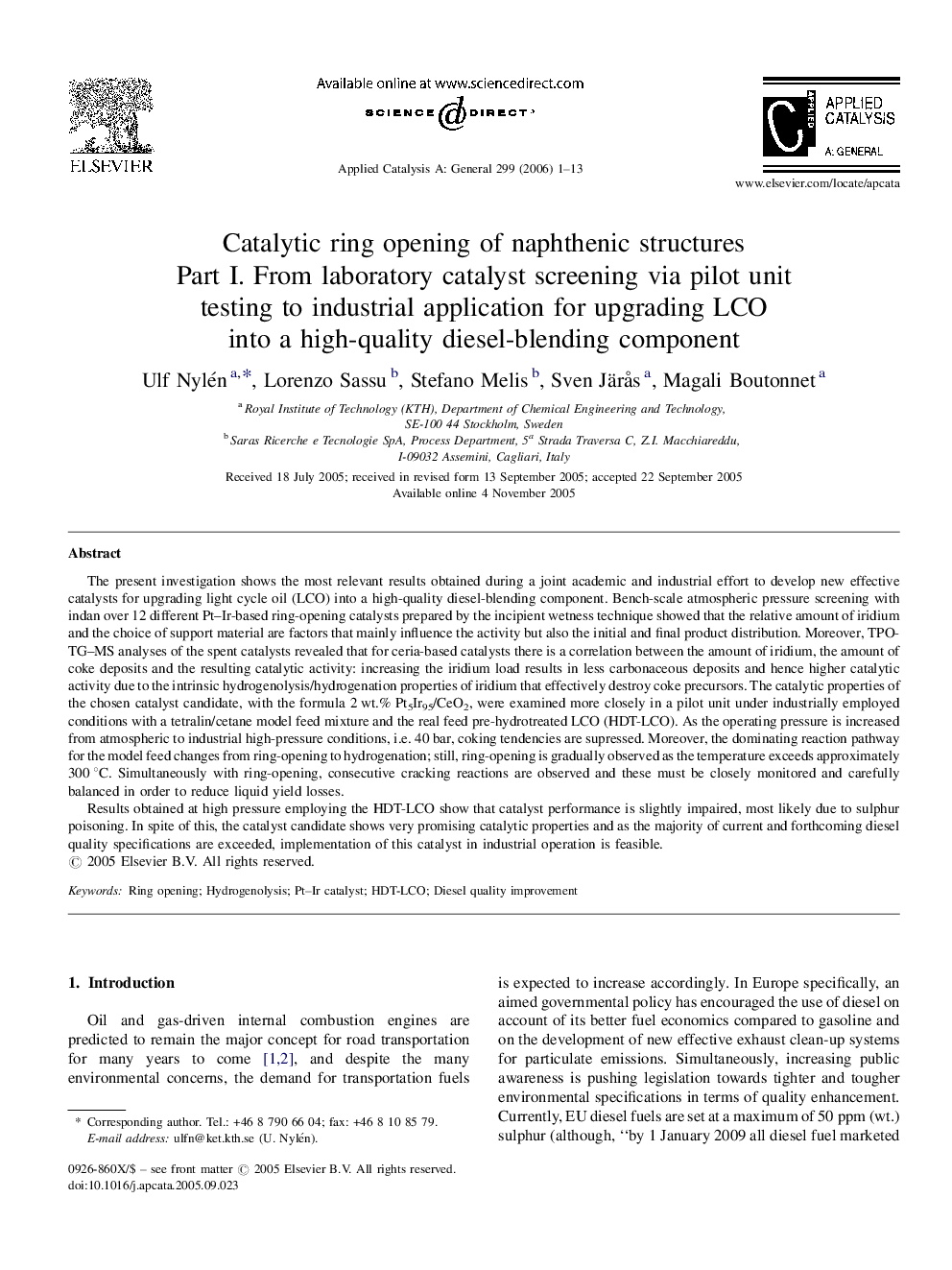| کد مقاله | کد نشریه | سال انتشار | مقاله انگلیسی | نسخه تمام متن |
|---|---|---|---|---|
| 44176 | 46007 | 2006 | 13 صفحه PDF | دانلود رایگان |

The present investigation shows the most relevant results obtained during a joint academic and industrial effort to develop new effective catalysts for upgrading light cycle oil (LCO) into a high-quality diesel-blending component. Bench-scale atmospheric pressure screening with indan over 12 different Pt–Ir-based ring-opening catalysts prepared by the incipient wetness technique showed that the relative amount of iridium and the choice of support material are factors that mainly influence the activity but also the initial and final product distribution. Moreover, TPO-TG–MS analyses of the spent catalysts revealed that for ceria-based catalysts there is a correlation between the amount of iridium, the amount of coke deposits and the resulting catalytic activity: increasing the iridium load results in less carbonaceous deposits and hence higher catalytic activity due to the intrinsic hydrogenolysis/hydrogenation properties of iridium that effectively destroy coke precursors. The catalytic properties of the chosen catalyst candidate, with the formula 2 wt.% Pt5Ir95/CeO2, were examined more closely in a pilot unit under industrially employed conditions with a tetralin/cetane model feed mixture and the real feed pre-hydrotreated LCO (HDT-LCO). As the operating pressure is increased from atmospheric to industrial high-pressure conditions, i.e. 40 bar, coking tendencies are supressed. Moreover, the dominating reaction pathway for the model feed changes from ring-opening to hydrogenation; still, ring-opening is gradually observed as the temperature exceeds approximately 300 °C. Simultaneously with ring-opening, consecutive cracking reactions are observed and these must be closely monitored and carefully balanced in order to reduce liquid yield losses.Results obtained at high pressure employing the HDT-LCO show that catalyst performance is slightly impaired, most likely due to sulphur poisoning. In spite of this, the catalyst candidate shows very promising catalytic properties and as the majority of current and forthcoming diesel quality specifications are exceeded, implementation of this catalyst in industrial operation is feasible.
Journal: Applied Catalysis A: General - Volume 299, 17 January 2006, Pages 1–13